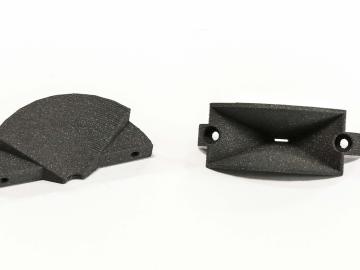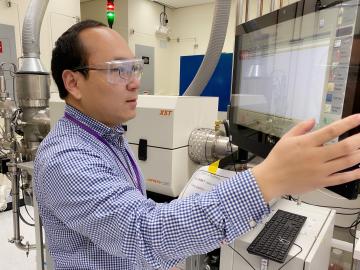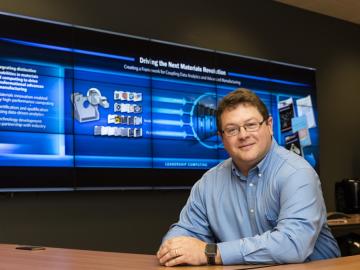
Filter News
Area of Research
- (-) Advanced Manufacturing (24)
- (-) Fusion Energy (13)
- (-) Materials (77)
- Biology and Environment (72)
- Building Technologies (3)
- Computational Biology (2)
- Computational Engineering (3)
- Computer Science (15)
- Electricity and Smart Grid (1)
- Energy Science (158)
- Energy Sciences (1)
- Fuel Cycle Science and Technology (1)
- Functional Materials for Energy (1)
- Fusion and Fission (30)
- Isotope Development and Production (1)
- Isotopes (4)
- Materials for Computing (17)
- Mathematics (1)
- National Security (29)
- Neutron Science (31)
- Nuclear Science and Technology (40)
- Nuclear Systems Modeling, Simulation and Validation (2)
- Quantum information Science (7)
- Supercomputing (159)
News Topics
- (-) 3-D Printing/Advanced Manufacturing (42)
- (-) Advanced Reactors (10)
- (-) Computer Science (19)
- (-) Coronavirus (4)
- (-) Frontier (4)
- (-) High-Performance Computing (4)
- (-) Nuclear Energy (24)
- (-) Polymers (17)
- (-) Quantum Computing (3)
- Artificial Intelligence (10)
- Big Data (2)
- Bioenergy (11)
- Biology (4)
- Biomedical (7)
- Buildings (5)
- Chemical Sciences (32)
- Clean Water (3)
- Composites (12)
- Critical Materials (13)
- Cybersecurity (4)
- Energy Storage (34)
- Environment (15)
- Exascale Computing (2)
- Fusion (18)
- Grid (5)
- Irradiation (1)
- Isotopes (13)
- ITER (1)
- Machine Learning (6)
- Materials (79)
- Materials Science (81)
- Mathematics (1)
- Microscopy (27)
- Molten Salt (3)
- Nanotechnology (39)
- National Security (3)
- Neutron Science (35)
- Partnerships (11)
- Physics (28)
- Quantum Science (11)
- Security (2)
- Simulation (1)
- Space Exploration (3)
- Summit (3)
- Transportation (14)
Media Contacts

Oak Ridge National Laboratory researchers have demonstrated that a new class of superalloys made of cobalt and nickel remains crack-free and defect-resistant in extreme heat, making them conducive for use in metal-based 3D printing applications.

The ExOne Company, the global leader in industrial sand and metal 3D printers using binder jetting technology, announced it has reached a commercial license agreement with Oak Ridge National Laboratory to 3D print parts in aluminum-infiltrated boron carbide.

Six scientists at the Department of Energy’s Oak Ridge National Laboratory were named Battelle Distinguished Inventors, in recognition of obtaining 14 or more patents during their careers at the lab.

Six ORNL scientists have been elected as fellows to the American Association for the Advancement of Science, or AAAS.

Momentum Technologies Inc., a Dallas, Texas-based materials science company that is focused on extracting critical metals from electronic waste, has licensed an Oak Ridge National Laboratory process for recovering cobalt and other metals from spent

About 60 years ago, scientists discovered that a certain rare earth metal-hydrogen mixture, yttrium, could be the ideal moderator to go inside small, gas-cooled nuclear reactors.

A developing method to gauge the occurrence of a nuclear reactor anomaly has the potential to save millions of dollars.

Oak Ridge National Laboratory scientists have discovered a cost-effective way to significantly improve the mechanical performance of common polymer nanocomposite materials.

The Society of Manufacturing Engineers, known as SME, has named William Peter, director of Oak Ridge National Laboratory’s Manufacturing Demonstration Facility in the Energy and Environmental Sciences Directorate, among its 2020 College of SME Fellows.

Oak Ridge National Laboratory researchers have developed artificial intelligence software for powder bed 3D printers that assesses the quality of parts in real time, without the need for expensive characterization equipment.


